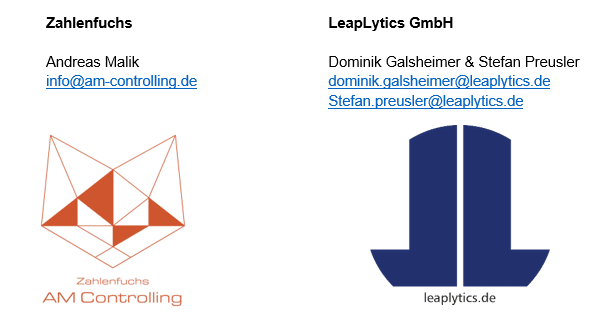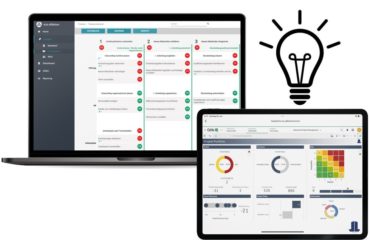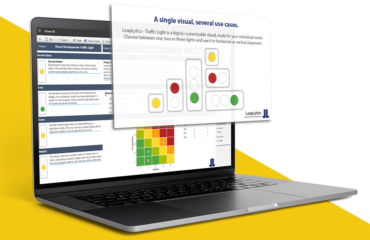Those who know the future are ahead of the game! Read in our 3-part article why Business Intelligence is especially relevant for small and medium-sized enterprises (SMEs), how challenging actually the first step is, but what are also essential advantages and how you can approach the whole topic efficiently. The SME expert for controlling and management Andreas Malik as well as the business intelligence specialists and founders of one of the leading providers of data visualizations and dashboards in the field of Power BI and Qlik Sense, Stefan Preusler and Dominik Galsheimer, will guide you through these 3 exciting parts of the article series with their experiences and expert knowledge. In the first part, we look at why Business Intelligence and SMEs go well together. The second part deals with clearly identifying advantages and thus finding the right point time to start it. The third part then shows you important first steps for implementation and introduction
Part 3: Preparing the first steps
Isn’t a BI system for large corporations only?
The introduction of BI systems is not a time consuming and expensive project anymore, which is reserved for large corporations. With the existing integrated possibilities of e.g. Microsoft, many functions already come along in the standard version. Industry-specific templates as well as the right visualizations help to achieve success very quickly.
For example, the Power BI tool from the Microsoft Suite can be used very well to implement all essential requirements – and this is usually integrated into the existing license model. Additional services, such as a file share (Sharepoint) can be easily integrated.
We help to apply and implement industry-specific metrics and data models. Our cross-industry experience offers you an advantage that you do not have when implementing individual solutions.
In addition to setting up the data basis, the training of the new software for report creators as well as recipients is very important and is also supported by us.
So what now?
Once the advantages, benefits and goals have been identified, it is recommend to give the entire topic a structure. A structure which is subsequently also suitable for a detailed requirements specification.
Start by answering the following questions for yourself:
- What questions do report recipients want to solve with a report, or what information do they need?
- Which report recipients want to receive information and how/ in what form should this information be prepared?
- What are the essential dimensions of steering your company, or important dimensions for answering the question?
- Where do I get these data (data sources) and what are relevant impact contexts?
- Which reporting processes do I have to think about in order to get the data in the right form (data processing)?
- Which reporting tool best reflects my needs?
Ideally, these questions are answered in a workshop with your team.
Once the questions have been answered, the next concrete steps must be planned. From experience, we can say that this usually has to be tailored very individually to the framework conditions of the company. Among other things, the initial situation, personnel availability and technical conditions play a major role here and must be correctly assessed. However, the following checklist provides a good overview of possible first steps in SMEs:
- The topic “reporting” should get a solid responsibility in the corporate context. Usually , finance teams takes care about the reporting in order to ensure proximity to financial processing.
- Get key report recipients early on board and include them in the decision-making process.
- It makes sense to solve this task in a project, which is staffed with the appropriate know-how.
- Certain skills, e.g. databases or report generation, may not be directly available in the company and can be purchased externally.
- Define the absolutely necessary scope in the first step. A small scope, which covers the essential needs, is safer and easier to implement in the first step. It also ensures you the necessary project success to gather appropriate buy-in from all stakeholders and move on.
- Basically, it is recommended to set up the basis of the report creation, i.e. the data, reporting and, if necessary, calculation basis once in a classic waterfall project. It is important that the basic logic works “end-to-end” and that the reporting experience works perfectly once from the data basis to the evaluation level.
- It is in the nature of things that report recipients make extreme progress with the new information. This creates new questions, or information needs, which are usually addressed as change requirements to the reporting system. These changes and other requirements can then be implemented in a more agile development mode.
A precisely fitting coordination should take place according to your individual needs.
Conclusion:
A BI system is not a dusty matter of intelligent data management, but forms the foundation of succeed in the market and further successful corporate management.
It creates a basis for decision-making by analyzing and presenting data and their interrelationships.
Therefore, a BI system is important for all companies, no matter how big or small they are. No entrepreneur, no managing director should run their company without Business Intelligence, because: Those who know the future are ahead of the game! Have we aroused your interest? We would be happy to assist you and are offering a first on-binding initial meeting
For further question, we stay at your disposal:







